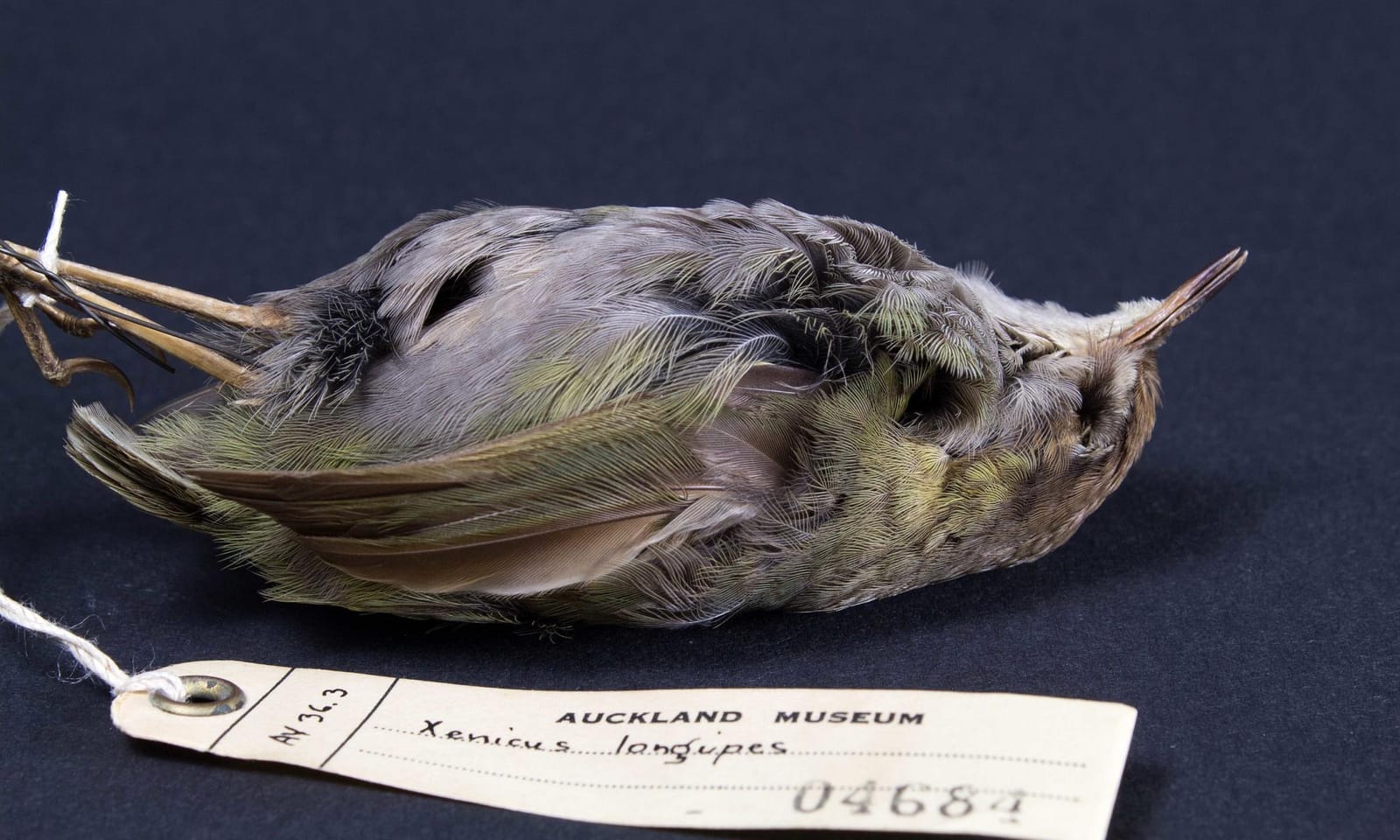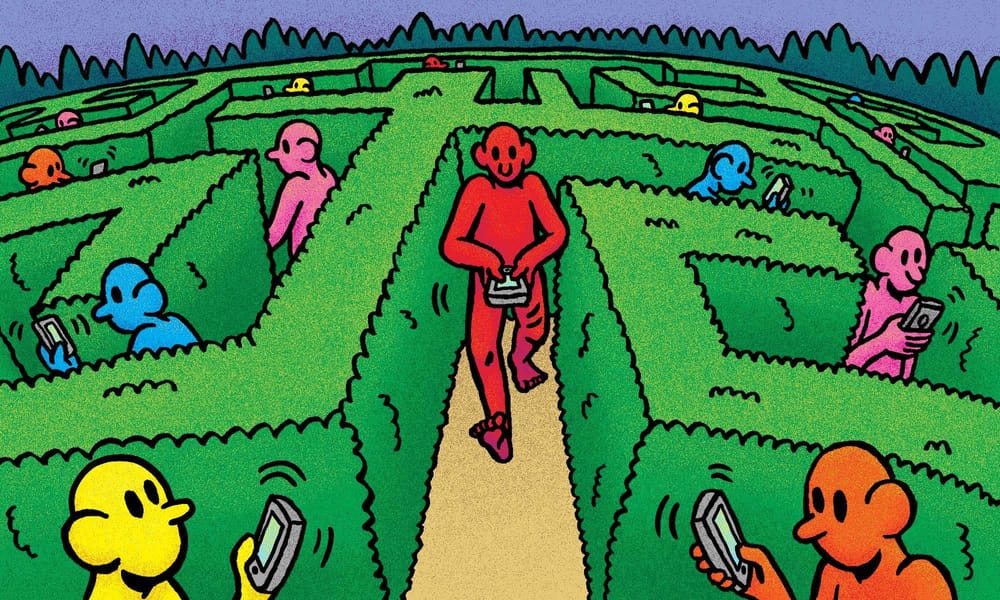Aotearoa New Zealand has an ambitious goal: by 2050, the nation hopes to rid the country of its most damaging introduced predators. But with current pest control practices, this is proving difficult.
Globally, Aotearoa has the highest proportion of threatened indigenous species. The strategies we have in place to manage this issue—poisons, trapping and hunting—exhaust our resources more than they do the pest populations. We are simply lacking the accuracy and efficiency required to eradicate our predators and protect our native wildlife. If Aotearoa truly wants to achieve its 2050 goal, we will need to begin exploring alternative solutions. This is where biotechnology may come into play. A recent advance in gene-editing technology, known as CRISPR-Cas9, has the potential to completely revolutionise how we manage our invasive species, perhaps even giving us the ability to edit out pests altogether.
* * *
An island country long isolated from other landmasses on the planet, Aotearoa once fostered an environment of native flora and fauna found nowhere else on Earth. The country was a lost world, free from mammalian predators, designed for slow-growing trees and ground-dwelling birds. In their oral histories, Māori, the Indigenous people of Aotearoa, recount the bird song having once been so loud it could be heard from well out at sea. In 2021, there are parts of the country where there is only silence.
Seven hundred years ago, when humans first began to make their homes in Aotearoa, so did pests. Their introduction was both accidental and intentional but when they arrived, they thrived. For predators, the country was a utopia. The native species which inhabited the lands had grown so accustomed to their previously predator-free environment, they struggled to adapt to the threat these intruders posed. The careful balance of an ecosystem millions of years in the making was disrupted.
One of the first pests, the Kiore (Pacific Rat), is thought to have either arrived as a stowaway or brought intentionally as a food source in the canoes expertly navigated by Māori’s early Polynesian ancestors. Upon reaching Aotearoa, with nothing to deter them, the Kiore severely decimated populations of native flora and fauna and contributed to the extinction of several land bird species.
A few centuries later, the Europeans arrived. Unwittingly, they brought with them the ship rat and the Norway Rat, which posed a new threat to the native species. Larger than the Kiore, the Norway Rat, in particular, preyed on species which had survived the initial invasion. Then, as Europeans colonised the land, they began to deliberately introduce species that would rapidly become pests. Rabbits were brought in for game; stoats and ferrets to curb the rabbit population as it grew out of control; and possum populations were established for their fur. These pests found themselves in a cornucopia. They had an abundance of food sources but, more importantly, they faced little to no predators in this new environment. With nothing holding them back, these introduced species have given Aotearoa one of the worst extinction rates in the world.
For decades, conservationists have tried to control unwanted critters through the use of traps, bait stations and aerial poisonings. These approaches are limited, requiring an incredible amount of resources with only a small spatial impact. Moreover, many of these approaches have left a trail of adverse environmental effects and, in some cases, even had negative impacts on human health.
At present, the most effective method we have for pest control are pesticides. While they have many negative connotations, the pesticides we use today are considered relatively benign, having had to meet rigorous environmental standards prior to their use. The issues with pesticides arise when they find their way into non-target species, which includes humans. Pesticides can be carried through water, air and soil, and while they mostly benefit and are necessary for our ecosystems, there is evidence to suggest they can be harmful too. Studies based in Aotearoa have found pesticide exposure to be associated with increased risk of many long-term chronic health effects, like cancer, in humans. We need something new.
Dr John Kean, a specialist in population ecology, uses data analysis and modelling to explore the population dynamics of invasive species. Recently, he modelled what eradication programs based on new tools for controlling invasive pests could look like.
“In general, we’re facing pretty gnarly environmental problems in [Aotearoa] and around the world,” he says. “Our traditional methods of dealing with these [problems] are becoming less acceptable—we really need to be exploring alternative pest control strategies.”
Dr Kean describes alternative pest control strategies as a “spectrum.” He explains that on the one end, you have an approach like ‘biological control.’ This entails the deliberate introduction of “a natural enemy” missing from the environment to control the pest populations—something that has already been tried in Aotearoa with varying degrees of success. The historical introduction of stoats to control rabbits is a good example of biological control gone awry, but nowadays we are much more careful, with the introduction of host-specific enemies being scrupulously overseen by scientists, government and other parties. Significant non-target impacts of biological controls are now very rare, but this care makes it very difficult to find suitable agents, especially for mammalian pests.
On the other end of the spectrum, you have ‘engineered gene drives,’ where a particular gene may be introduced into a pest population to weaken and control it. Kean was interested to explore whether these gene drives might hold the answer for Aotearoa’s pest problem.
In the natural world, when two organisms reproduce, the offspring has a 50 percent chance of inheriting a certain gene from either parent. A gene drive is a naturally occurring process that alters the rules of heredity by increasing the likelihood of specific genes being handed down the generations. Through this process, the speed at which particular genes drive through a population is increased. Dr Kean clarifies that because it occurs naturally, there are traces of gene drives in most groups of organisms, but with engineered gene drives, we choose the genes that we want the target species to inherit. Essentially, we can overwrite any natural predispositions.
“The difference [between naturally occurring gene drives and engineered gene drives] is that we are trying to potentially short-circuit a whole bunch of evolution and go straight to the endpoint that we want,” Dr Kean explains.
While human-engineered gene drives in pest control and conservation were initially conceptualised in the 1960s, it is only in the last decade with recent biotechnological breakthroughs that we see this approach moving from potential to reality.
In 2012, a new gene-editing tool was developed: CRISPR (Clustered Regularly Interspaced Short Palindromic Repeats), adapted from a naturally occurring defence mechanism found in bacteria. It is through the development of this technology that engineered gene drives may be utilised as part of the 21st-century conservation toolbox.
CRISPR stands apart from previous gene-editing practices because it is simple, versatile and precise. Through CRISPR gene drives, we can ensure that almost all offspring reproduced in the target species will inherit the gene(s) we determine. This is achieved through a three-part gene drive package, consisting of the desired gene, such as the introduction of an infertility gene in the offspring of a species; CRISPR, which determines where this gene should be inserted; and finally, the Cas9 enzyme, which acts as ‘molecular scissors.’ Most chromosomes exist in pairs: one inherited from the mother and the other from the father. But if one of the pair carries the gene drive, it will cut the other chromosome at a particular site. When the cell repairs the cut, it uses the undamaged chromosome as a pattern, inadvertently inserting the gene drive. Instead of only half of the future offspring inheriting the gene, now all will.
To put it simply, CRISPR technology enables us to locate and replace sections of DNA with incredible efficiency. With CRISPR-Cas9, we have precision unlike anything seen before. We may have the power to potentially eliminate disease, revert pesticide resistance and wipe out pest populations completely—but should we?
Compared to current methods, gene drives are a much more resource-efficient and environmentally acceptable approach. CRISPR may allow us to minimise pesticide use while causing less harm to animals. Even PETA (People for the Ethical Treatment of Animals) have come out in support of the technology as a more humane approach to pest control. However, this is new territory and while it could be incredibly effective, it is raising some serious questions.
Phil Lester, an academic with Victoria University of Wellington, specialising in entomology and ecology, has spent a lot of time working on the best way to control pests with the least environmental harm and the most significant benefit. In a recent 2020 study, “The potential for a CRISPR gene drive to eradicate or suppress globally invasive social wasps,” Lester and his team looked at how we could use the CRISPR technology to control Aotearoa’s largely unknown wasp issue.
Within the beautiful honeydew beech forests of Aotearoa’s South Island, we are harbouring some of the “biggest, largest, most dense populations of wasps in the world,” Lester explains.
“With wasps, you walk through the forests in autumn, and you don’t hear the birds; you hear buzzing,” Lester says. “The smell of the air changes; it’s that bad. It is a problem that not many people know about, and for those that do, the question of how best to overcome the issue troubles them.
“It’s a big conservation threat,” Lester surmises. The presence of the wasps in the honeydew forests are changing the fundamental processes of the environment and its ecological systems.
Before the arrival of wasps, the honeydew produced from the beech trees fed the native birds and insects, while anything left fell to the forest floor beneath them. Across millennia, this honeydew became a vital part of the ecosystem, impacting soil composition and nutrient cycling. Now, with the wasps consuming 90 percent of the honeydew produced by these forests for almost six months of every year, the amount of honeydew reaching the forest floor is greatly reduced. This has resulted in drastic changes to our native ecosystems from the ground up.
Through modelling, headed by Dr Kean, the 2020 study explored how to target a selection of different genes to induce sterility in male wasps. The different scenarios explored how rapidly the gene would spread through the population and, ultimately, its effects. Their results indicate that gene drives have the potential to offer “viable suppression for wasps and other haplodiploid pests” in Aotearoa. In other words, through this biotechnological advance, we have the potential to return our beech forests to their original splendour by restoring their natural ecological state.
So, with the news that this approach could successfully control the wasps, what is holding us back? Well, as of yet, these pest control practices have only been theorised, but never practically applied.
“We get lots of questions,” Lester says. “Could you successfully identify genes? Could you effectively manipulate those genes? Are those genes the same in other insects? Could there be non-target effects of those systems? Could this find its way back to Europe?”
The questions highlight a significant concern raised in the CRISPR gene drive discourse and is exactly why exploratory models are important. Before we can even consider utilising human-led gene drives or CRISPR technology, we have to confront and overcome some real ethical issues. If we introduce a gene-edited sequence, what is the likelihood that it would escape the target population and adversely affect an unintended species, perhaps even spreading across the globe? This kind of research can be used to bring the discussion into the public sphere.
The issue with CRISPR is that we have been caught in what Dr Kean describes as a “hype cycle.” At one end of the debate, gene drives, or at least the consideration of gene drives, have been promoted by scientists and conservationists to potentially overcome our limitations for pest control. While at the other end, they have been censured by those who have “philosophical objections” to such approaches. The true value of CRISPR gene drives lies somewhere between these “polarised views,” but one of the biggest misconceptions is heralding gene drives as a “silver bullet.”
“Before going into this, I did have the impression that these gene drives were very effective, and there were a lot of risks associated with them,” Dr Kean explains. However, he concludes that at least in the case of the gene drives his team has modelled, his perception has changed due to the research. “There are ways in which [this] approach can be used safely and responsibly.”
“[It is a] tricky balance,” Dr Kean says. Many have expressed fears that a gene drive would wreak havoc on the planet if we lost control of it, but the research here suggests otherwise. Lester and Kean’s study found that the gene drive models demanded a balance between a gene that can spread rapidly in the wasp populations and one that spreads widely. They concluded that in some instances, gene drives may not be as powerful as we think.
Dr Kean explains that when it comes to the sterility gene modelled in the study, there is “no competitive advantage.” Within the quirky inheritance system of wasps and other social insects, the driven gene would not spread effectively through the population.“If there is any kind of disadvantage associated with [the gene], then it will be quickly eliminated,” he surmises. In essence, with the wasps of the 2020 study, the gene drive itself will not be enough. If left to its own devices, the gene would likely be bred out. Thus, to have any effect, this kind of drive would have to be used in a managed way, probably in association with other control techniques such as poisonings.
Alternatively, we could circumvent the issue of the CRISPR gene drive being too efficient with ‘daisy drives,’ which is described by MIT Media Lab as a “self-exhausting form of drive system that uses up critical genetic fuel until it stops.” As such, daisy drive advocates argue that we could better predict and control its effects. Where CRISPR gene drives are considered to be “self-sustaining,” a daisy drive has limits.
Daisy drives are still largely theoretical, but the models we do have suggest positive outcomes. Because of the inbuilt limitations within daisy drives, we could seemingly assuage the risk of the drive extending beyond certain geographical borders. In short, any impacts had by daisy drives would be ‘local’ and ‘temporary.’ Communities would be able to test the practice in a controlled, localised way before deciding whether to scale up or not. It might be the case that a daisy drive is a more acceptable first step for the general public than a full CRISPR CAS-9 gene drive.
Where does that leave us?
“The use [of CRISPR gene drives] in [Aotearoa] pest control is probably still a way off,” Lester says. But, that does not mean it is not coming. We are beginning to see CRISPR technology in medicine, with the FDA approving its use in the treatment of sickle cell disease just this year. Lester suggests that once people begin to see the power of the technology in the medical field, they might start reconsidering just how we can practically apply CRISPR and perhaps, more than anything, its level of social acceptability.
While Aotearoa offers an opportune environment for a gene drive scenario, we would require a lot more research and a major cultural shift before we could consider implementing such a practice. For now, we need to open the pathways for active public discussions to take place. This means establishing meaningful forums for communication and for people to access further education on the subject.
Biotechnology is rapidly advancing, providing us with solutions to issues we once could only dream of. CRISPR gene drives have the potential to help control and potentially resolve a global problem threatening the biodiversity of the world: pests. For Aotearoa, we have a huge challenge ahead of us with Predator Free 2050. To meet this goal, we need to choose the best tool for each circumstance, carefully considering every option’s environmental ramifications and non-target effects. While CRISPR gene drives may not be the be-all and end-all approach, they could be one of the elements needed to establish an effective conservation toolbox.
Perhaps one day, with the assistance of biotechnology, we can return the birdsong to our forests.







